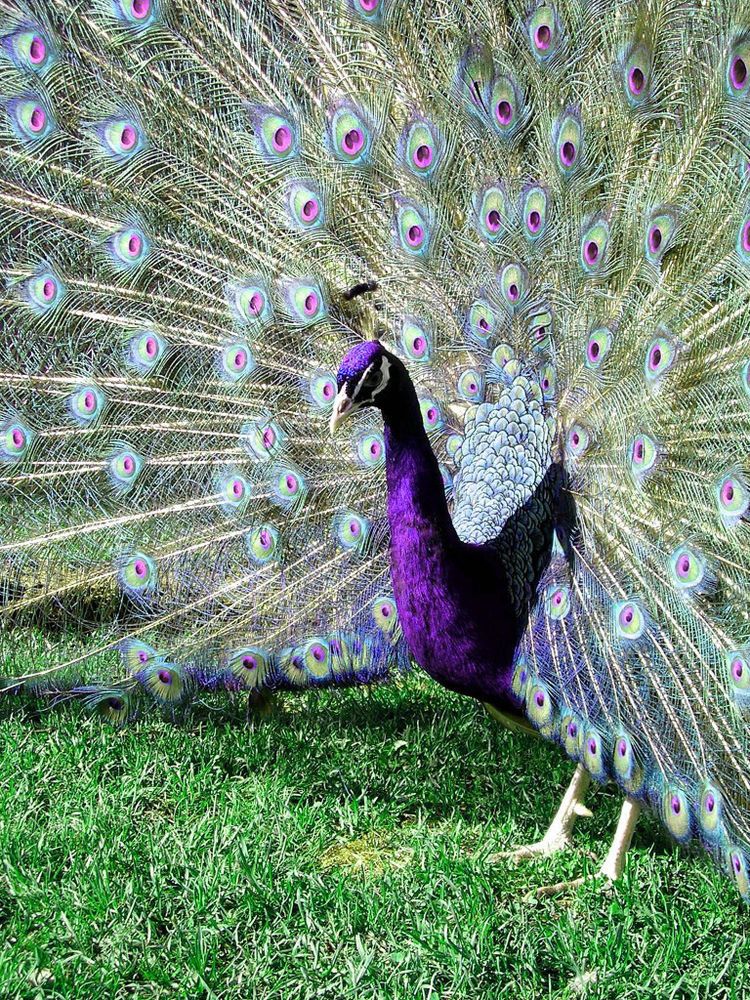Purple Peafowl
The rare and sought-after Purple Peafowl is 1 of 12 UPA (United Peafowl Association) approved and recognized peafowl colors. Within the Purple Color there are multiple combinations of patterns and varieties.
Purple is a genetic mutation of the Blue India (Pavo Cristatus) that produces a purple rather than a greenish-blue sheen on the feathers. Male Purple Peafowl have purple or purplish-blue neck and breast feathers. The scale-patterned feathers on the back and saddle are a dark blue-green rather than the green-yellow color of the Blue India. The train has almost none of the yellow or bronze-red tones of the Blue India, and instead is mostly greenish blue with purple overtones and sheen. If you focus on the color of the eye feathers, a purple peacock's will be a dark green-blue with a purple center. The eye feather of a Blue India would be mostly yellow-green with a reddish-orange and bright blue center.
Purple Peahens are lighter in color than Blue India Peahens, almost a dusty tawny color. Also, the colored feathers around the neck have a definite purple iridescence rather than a green.
One of the most unusual aspects of the Purple Peafowl is that their feathers fade during the course of the year. With each molt and new growth of feathers, the feathers are all initially brilliantly and brightly colored. But as the season progresses, the colors fade and look like an old piece of lace with just a shimmer of the iridescence and colors of the early part of the season. It is interesting to think of this color change as keeping the bird always in contrast to its environment. In winter and early spring, the brilliant colors stand out against the drab surroundings. But in late spring and early summer the faded, light tawny colors stand out against the lush garden environment.
Like all peafowl, Purple Peafowl are easy to care for. They are hardy and robust birds. See our Peafowl Care Sheet for more detailed information on raising them. Peafowl are adaptable and smart and can hold their own against many predators. They roost at night time in trees if free ranging. If kept in an enclosure or aviary, be sure to provide plenty of room for the massive train feathers and displaying peacocks. Roosts should be as high up as possible. Breeding season is March through July. Clutches are usually 6-10 eggs and are incubated for 28 days.

